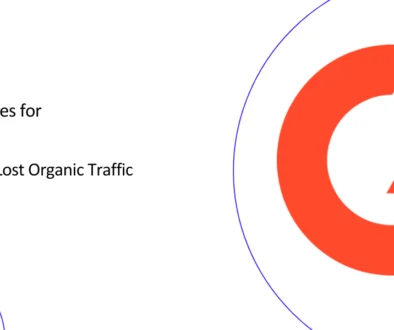How to Improve Loading Speed of SPA with Server-Side Rendering
Imagine ordering a delicious pizza online. You’re excited and hungry, but instead of receiving the pizza immediately, you’re handed a box of individual ingredients like cheese and dough. Now, frustrated and still hungry, you must wait and bake the pizza yourself.
This is essentially the experience of traditional Single Page Applications (SPAs) not using server-side rendering. They’re like pizza ingredient boxes, requiring you to “bake” the pizza yourself by loading a large JavaScript file before any content is displayed. This can be slow, particularly for complex applications, and leave users staring at a blank screen, waiting for the app to become usable. But fear not, there’s a solution: Server-Side Rendering (SSR)!
What is Server-Side Rendering?
Server-side rendering (SSR) is a web development technique where the server generates the HTML code for a web page before sending it to the browser. In essence, the server acts like the chef, preparing the pizza (the webpage) according to your recipe (the code) and delivering it ready to enjoy. This ensures fast initial load times and a consistent user experience, as everyone receives the same pre-rendered HTML, regardless of their device or browser capabilities. Think of it like ordering a pizza from a restaurant – they prepare the pizza exactly to their specifications and deliver it hot and ready to eat.
How is SSR Different from Traditional SPAs?
Traditional SPAs rely on JavaScript for everything, making them slower to load initially. With SSR, the server renders the initial HTML, giving users something to see and interact with while the JavaScript downloads and takes over. It’s like having a pre-baked pizza crust ready to receive the toppings.
What are the Benefits of Server-Side Rendering?
Faster Initial Load Times
Users see content instantly, leading to a more satisfying experience. Imagine the relief of seeing your pizza toppings instead of a blank box!
Improved SEO
Search engines love readable content. Search engines can easily crawl and index the content of websites and SPAs using Server-Side Rendering, as it’s already fully rendered on the server. Conversely, traditional SPAs using client-side rendering only rely on JavaScript to dynamically generate content, which can make it difficult for search engines to understand and index.
While client-side rendering offers a faster initial user experience, its SEO benefits are limited. The reliance on JavaScript can create delays in crawling and indexing and potentially hinder search engine visibility. Additionally, some search engine bots may not have complete JavaScript capabilities, leading to missed content and lower rankings.
Better Accessibility
Users with slower connections or assistive technologies can access content immediately, ensuring inclusivity.
What are the Trade-offs of SSR?
Increased Server Load
SSR requires the server to perform additional work, which can be resource-intensive for large applications.
Development Complexity
SSR requires developers to have a deeper understanding of server-side technologies and frameworks like Node.js, Ruby on Rails, or Django, in addition to their front-end skills. This can be a steep learning curve, especially for developers accustomed to the simpler setup of CSR. Moreover, debugging can be more complex with SSR due to the involvement of both server-side and client-side code. Identifying the source of errors requires extra steps and familiarity with both environments.
How to improve the loading speed of your single-page application using server-side rendering?
The following 3 are the most common solutions that developers use to improve the loading speed of an SPA using SSR.
1. Pre-render Initial Content
- Identify Initial Content: Determine the essential content users see first (e.g., header, main content).
- Generate HTML on Server: Use server-side code to generate the initial HTML with this content.
- Hydrate on Client-Side: Inject the pre-rendered HTML into the DOM on the client.
- Load JavaScript Asynchronously: Load JavaScript asynchronously to avoid blocking initial render.
Benefits:
- Instant content visibility for users.
- Faster initial render speeds.
- Improved SEO due to readily available content for crawlers.
2. Code Splitting
- Break Down JavaScript Code: Divide your application code into smaller bundles based on routes or features.
- Load Only Required Bundles: Only load the bundle for the initial route on the server.
- Lazy Load Remaining Bundles: Load additional bundles as users navigate to specific features.
Benefits:
- Reduced initial payload size for faster download.
- Improved loading times for subsequent page transitions.
- More efficient resource utilization.
3. Data Prefetching
- Identify Essential Data: Determine the data needed to render the initial content and subsequent pages.
- Prefetch Data on Server: Fetch the essential data on the server before sending the initial HTML.
- Hydrate Client-Side with Data: Hydrate the pre-rendered HTML with the fetched data on the client.
Benefits:
- Eliminates the need for initial data fetching on the client.
- Reduces perceived loading times for users.
- Improves responsiveness and interactivity.
In terms of market share and community support, which two frameworks dominate the server-side rendering landscape?

The top 2 most widely used frameworks for server-side rendering are Next.js and Nuxt.js.
Next.js
Next.js is a popular framework for building SPAs with React, offering built-in features like automatic routing, data fetching, and pre-rendering. It simplifies SSR development by providing pre-configured solutions for common tasks, making it a great choice for developers familiar with React.
Nuxt.js
Nuxt.js is the equivalent of Next.js but for Vue.js developers. It provides similar features like automatic routing, data fetching, and pre-rendering, but with a focus on simplifying Vue development. Nuxt.js is a great option for developers who want to leverage the power of Vue.js with the benefits of SSR.
The following are the key differences between them.
| Feature | Next.js (React-based) | Nuxt.js (Vue-based) |
| Supported Framework | React | Vue |
| Routing | Automatic routing based on page file structure | Manually configured routes |
| Data Fetching | Built-in data fetching with getStaticProps and getServerSideProps | Manual data fetching with asyncData and fetch |
| Pre-rendering | Supports static site generation, server-side rendering, and hybrid rendering | Supports static site generation, server-side rendering, and hybrid rendering |
| Head Management | Built-in head management for meta tags, title, and other SEO elements | Requires manual configuration of head elements |
| Community & Ecosystem | Large and active community with a vast ecosystem of libraries and tools | Smaller but growing community with a focus on Vue-specific tools |
What are some popular single-page applications built with Next.js?
- GitHub Pages: GitHub’s static site hosting platform leverages Next.js for its user interface, providing a fast and dynamic experience.
- Twitch: The popular live streaming platform utilizes Next.js for various aspects of its web interface, including the directory and channel pages.
- MDX Documentation: The popular documentation platform MDX utilizes Next.js for its website and live previews, delivering a smooth and interactive experience for developers.
What are some popular single-page applications built with Nuxt.js?
- Storyblok: This headless CMS platform utilizes Nuxt.js for its public-facing website and admin panel. It leverages Nuxt.js features like server-side rendering and static site generation for SEO optimization and fast loading times.
- Vuejobs: This job board platform utilizes Nuxt.js for its user interface, providing a fast and dynamic experience for job seekers and employers.
- Laracasts: This popular online learning platform for Laravel developers utilizes Nuxt.js for some of its website sections, offering faster loading times and a smoother user experience.
What are your personal recommendations for choosing between Next.js and Nuxt.js for an SPA project?
Both Next.js and Nuxt.js offer powerful features for building SEO-friendly SPAs with server-side rendering. Choosing the right framework depends on your preferred JavaScript framework (React or Vue) and your development team’s expertise.
Should You Use SSR for Your SPA?
SSR is a valuable tool for improving the initial load times and SEO of your SPA. However, it’s not a silver bullet. If your application is simple or has a low user base, the additional complexity and server load might not be worth it.
Ultimately, the decision depends on your specific needs and priorities. If speed and SEO are crucial, SSR is a powerful option. But if simplicity and ease of development are your main concerns, a traditional SPA might be sufficient.
Harness the Power of Server-Side Rendering with Manmash Consulting
If you’re looking to improve your website’s speed, user experience, and SEO with server-side rendering, Manmash Consulting is here to help. Our team of SEO experts can guide you through the process, from selecting the right framework to optimizing your website/single page application for maximum performance.
Don’t let a slow website hold you back. Contact Manzar Mashhood, CEO and founder of Manmash Consulting today and unlock the potential of server-side rendering!




